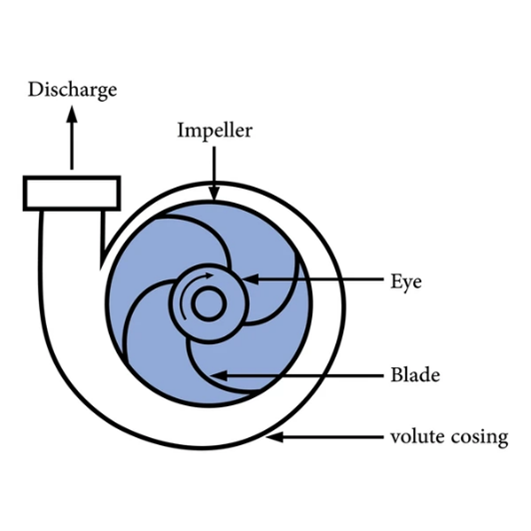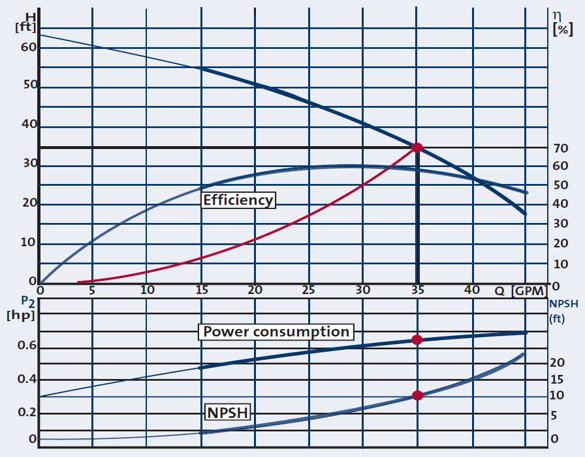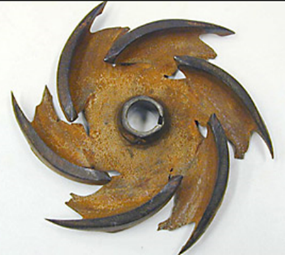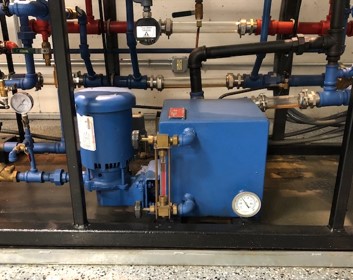Efficient steam systems are the backbone of industrial operations, and electric condensate return pumps ensure that no drop of energy goes to waste. In these systems, returning condensate to the boiler room or central utility plant (CUP) is essential for maintaining performance and reducing costs. Every gallon of condensate that isn’t returned must be replaced with fresh water—requiring additional energy, chemical treatment, and expense.
While it’s impossible to recover all condensate—due to leaks and flash steam losses through receiver vents—there are practical steps you can take to recover most of it. That’s where electric condensate return pumps come in.
How Electric Condensate Return Pumps Work
Electric condensate return pumps—most commonly centrifugal pumps—are the workhorses of steam system recovery. Their job is to move hot condensate from the receiver tank back to the boiler or central utility plant.
Here’s how they work: condensate enters the center (or “eye”) of a spinning impeller. The impeller’s curved vanes fling the fluid outward into a casing, building up velocity and pressure. This energy helps push the condensate through the outlet and into the downstream piping—even when there’s backpressure.
These pumps are popular because they’re relatively simple, cost-effective, and well understood. But to get the most out of them, it’s important to understand how they interact with the rest of the system—especially when it comes to flow, pressure, and efficiency.

Understanding System and Pump Curves
To size and select the right pump, engineers often use a “system curve.” This curve shows how pressure in the piping system changes as flow increases—mainly due to friction losses. It’s typically shown in red on a graph. Pump manufacturers then overlay this with a “pump performance curve” (usually in blue), which shows how the pump behaves under different conditions.
The goal is to match these two curves as closely as possible. But in real-world systems, actual backpressure often doesn’t line up with the engineer’s calculations. That mismatch can reduce efficiency and lead to performance issues.
For example, a pump might be designed to move 35 gallons per minute (GPM) against 35 feet of head (about 15.1 psi). But if the actual backpressure is 25 or 45 feet, the flow rate—and the pump’s power consumption and Net Positive Suction Head (NPSH) requirements—will change. One way to manage this is by installing a throttling valve downstream of the pump to help match the system’s actual head pressure to the pump’s design

Avoiding Cavitation and Seal Failures
One of the biggest threats to pump performance is cavitation. This happens when the pressure at the pump inlet drops below the vapor pressure of the condensate, causing tiny vapor bubbles to form. As these bubbles collapse, they create noise and can erode the impeller over time—leading to reduced efficiency and costly repairs.
To prevent cavitation, it’s important to maintain proper Net Positive Suction Head (NPSH). That means ensuring the pressure at the pump inlet stays high enough to keep the condensate from flashing into steam. Hotter condensate increases the risk, so keeping temperatures in check is key.
One area that we see as the most common maintenance item with electric condensate return pumps is seal failure. Even with modern seal technology, high-temperature condensate can shorten seal life. When seals fail, they often lead to leaks, increased maintenance, and potential downtime.
By managing condensate temperature and ensuring proper pump sizing and suction conditions, you can avoid these issues and extend the life of your pump.

Tips for Efficient Electric Condensate Return Pump Setup and Operation
To get the most out of your electric condensate return pump—and avoid common pitfalls—consider these best practices:
-
- Use a 3:1 safety factor: This helps accommodate sudden spikes in condensate load and prevents the pump from running continuously, which can lead to overheating and wear.
- Size the receiver properly: Aim for at least one minute of storage capacity. A larger receiver gives the pump time to rest between cycles, extending its lifespan.
- Select the right seal: Choose a seal that’s rated for the temperature of your condensate. Hotter condensate shortens seal life, so this detail matters.
- Ensure proper NPSH: Make sure the Net Positive Suction Head available at the pump inlet exceeds the pump’s NPSH requirement to avoid cavitation.
- Install a flash vessel if needed: This helps remove flash steam before it enters the pump’s receiver, reducing temperature and pressure spikes.
- Use a throttling valve: Placing a throttling valve on the pump outlet can help ensure the pump operates near its Best Efficiency Point (BEP).
Monitoring the system is just as important. A temperature gauge on the receiver can alert you to issues like:
-
- Failed steam traps that allow live steam into the receiver.
- Undersized receiver vents that trap flash steam and raise internal pressure
Keeping condensate temperatures manageable and system components properly sized will go a long way in improving pump performance and longevity.
Why It Matters
Electric condensate return pumps play a vital role in keeping steam systems efficient, cost-effective, and reliable. When properly selected, installed, and maintained, they help:
-
- Reclaim valuable energy from hot condensate
- Reduce the need for fresh water and chemical treatment
- Minimize maintenance issues like cavitation and seal failure
- Extend the life of your equipment and reduce downtime
These benefits aren’t just theoretical—they translate into real savings and improved performance across industries.

Improving your steam system’s efficiency starts with the right insights. While electric condensate return pumps play a key role in reclaiming energy and reducing costs, steam traps are just as critical. Failed traps can lead to energy loss, overheating, and pump damage.
A steam trap survey is a smart first step. It helps identify issues that may be impacting your system’s performance—and it pairs perfectly with a well-designed condensate return setup.
Ready to optimize your system? Connect with a Merlo Energy expert to assess your needs and implement best practices.
About Dennis Kacsur | Technical Training Manager at Merlo Energy
Dennis Kacsur is currently the Technical Training Manager for Merlo Energy. Over the last 28+ years, he has worked in various technical sales, marketing, and training positions with several steam specialty equipment manufacturers and sales organizations. During that span he has also helped facilities over a wide spectrum of industries as well as contractors and engineers to design, improve, and maintain their steam and condensate systems. Originally from Allentown, PA, Dennis has a BS in Mechanical Engineering from Penn State and an MBA from DeSales University.
Webinar - Importance of Condensate Drainage for Maximizing Efficiency
Explore the key strategies, equipment and maintence practices for efficient condensate removal.
Webinar - Troubleshooting & Optimizing Condensate Drainage Systems
Discover practical strategies, essential equipment, and maintenance practices that enhance reliability and prevent costly drainage issues.

